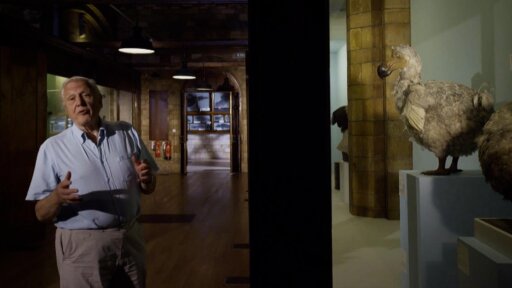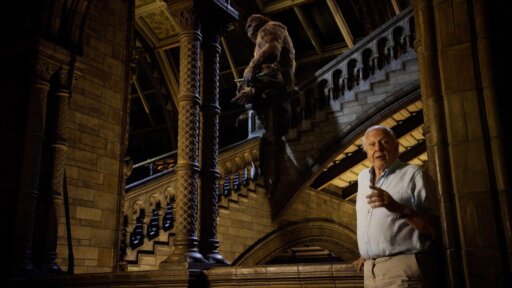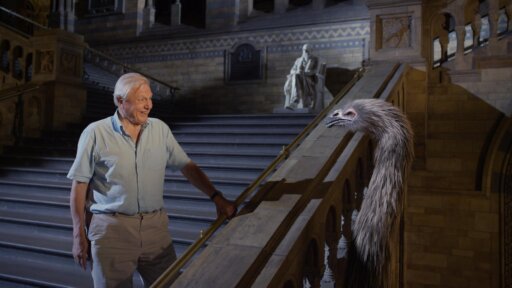Sir David Attenborough befriends a lifelike diplodocus as its towering skeleton replica comes to life. During this encounter, surprising truths are revealed about this extinct dinosaur.
Features



So now after 150 million years, we've got a pretty good idea of what Dippy looked like.
But how did she behave?
Well, animals her size and weight must have moved in a rather ponderous way.
And in any case, since she was a vegetarian, as we know from her teeth, she had no need to be speedy to get her food.
But it's the tiny bones in Dippy's inner ear that can give us a clue as to what she sounded like.
These little bones are basically the same shape as that of the dinosaur's closest relatives, birds.
The range of sounds a bird hears is related to its size.
A small bird makes and hears high pitch sounds, whereas large birds communicate with low-pitch sounds.
So, huge Dippy with her inner ear bones shaped like those of a bird could probably hear very low pitched frequencies of sound.
And she could probably make them too.
We know that elephants today can communicate using infrasound.
Sound with frequencies so low, they're below human hearing.
And those sounds travel through the ground sometimes for many miles, and are detected by elephants through their large, flat sensitive feet.
Dippy, too, had large flat feet.
So maybe the giant dinosaurs communicated with one another in much the same way, as well as by bellowing.
Her long tail would've helped to balance her long, heavy neck.
But why was her neck so long?
The most likely explanation seems to be that it helped her to reach leaves in all sorts of difficult places.
But in order to reach the highest, most succulent leaves in the forest, it seems likely that Dippy would've reared up on her hind legs.
Come on, Dippy breakfast.
Come om.
